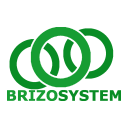Introduction
Amortization is a fundamental accounting and finance concept that involves spreading the cost of intangible assets or loan repayments over a specific period. Like depreciation, amortization helps businesses allocate expenses systematically, ensuring financial statements reflect an accurate financial position. Whether you’re managing a company’s intangible assets or repaying a loan, understanding amortization is crucial for sound financial planning and reporting.
What is Amortization?
Amortization refers to two primary processes:
- Expense Amortization: This involves gradually expensing the cost of intangible assets like patents, trademarks, goodwill, or software over their useful life.
- Loan Amortization: This refers to the process of repaying a loan in fixed installments over time, where each payment covers both interest and principal, gradually reducing the outstanding balance.
Why is Amortization Important?
Amortization serves several key purposes:
- Reflects Asset Value: It spreads the cost of intangible assets over their useful life, aligning expenses with the revenue they help generate.
- Tax Benefits: Amortization reduces taxable income as it is considered an expense, similar to depreciation.
- Improves Financial Reporting: It ensures financial statements accurately represent the costs associated with intangible assets and debt obligations.
- Facilitates Debt Management: Amortizing loans with fixed payments helps businesses and individuals plan cash flows effectively, knowing exactly what they owe each period.
Types of Amortization
1. Amortization of Intangible Assets
Intangible assets, unlike physical assets, do not have a tangible presence but provide value to a business over time. Examples include patents, copyrights, licenses, and trademarks. The amortization of these assets involves spreading their cost over their estimated useful life.
Example:
- A company purchases a patent for $100,000 with a useful life of 10 years.
- Annual Amortization Expense: Annual Amortization=Cost of the Asset/Useful Life=100,000/10=10,000
- The company will expense $10,000 each year over the next 10 years, reducing the asset’s value on the balance sheet.
2. Loan Amortization
Loan amortization involves repaying a loan through regular, fixed payments over time. Each payment includes both principal and interest, with the interest portion gradually decreasing while the principal portion increases as the loan is paid down.
Key Concepts in Loan Amortization:
- Principal: The original loan amount borrowed.
- Interest Rate: The percentage charged on the outstanding loan balance.
- Amortization Schedule: A table that details each periodic payment on an amortizing loan, showing how much goes toward principal and interest.
Example:
- A company takes out a $50,000 loan with a 5-year term at a 6% annual interest rate.
- Monthly payments are fixed at $966.64. Over the term, the amortization schedule will outline how each payment reduces the principal and covers interest.
Methods of Amortization
1. Straight-Line Amortization
- Description: The most common method, where equal amounts are expensed or repaid over the life of the asset or loan.
- Formula for Intangible Assets: Annual Amortization=(Cost of Asset−Residual Value)/Useful Life
- Loan Repayment: Equal payments are made periodically, with a consistent reduction in the principal.
2. Declining Balance Amortization (Accelerated Method)
- Description: Used primarily for intangible assets, this method accelerates amortization by applying a higher rate in the earlier years.
- Formula: Amortization=Book Value × Rate of Amortization
- Application: Often used when an asset’s economic benefits are expected to decline rapidly.
3. Balloon Amortization
- Description: In loan amortization, this method involves lower regular payments with a larger final payment (balloon payment) at the end of the term.
- Use Case: Suitable for borrowers who expect a large cash inflow at the end of the loan period.
Factors Affecting Amortization
- Cost of the Asset or Loan Amount: The initial outlay or principal amount determines the total to be amortized.
- Useful Life or Loan Term: The period over which the asset will be used or the loan will be repaid.
- Interest Rate (for Loans): The cost of borrowing impacts the total repayment amount.
- Residual Value (for Assets): The estimated value of an asset at the end of its useful life, though for many intangibles, this is often considered zero.
Conclusion
Amortization plays a vital role in managing and understanding both intangible assets and debt obligations. It provides a structured approach to expense recognition and debt repayment, ensuring businesses maintain accurate financial records and plan their finances effectively. BrizoSystem supports comprehensive amortization schedules, helping businesses handle both asset amortization and loan management with ease.
